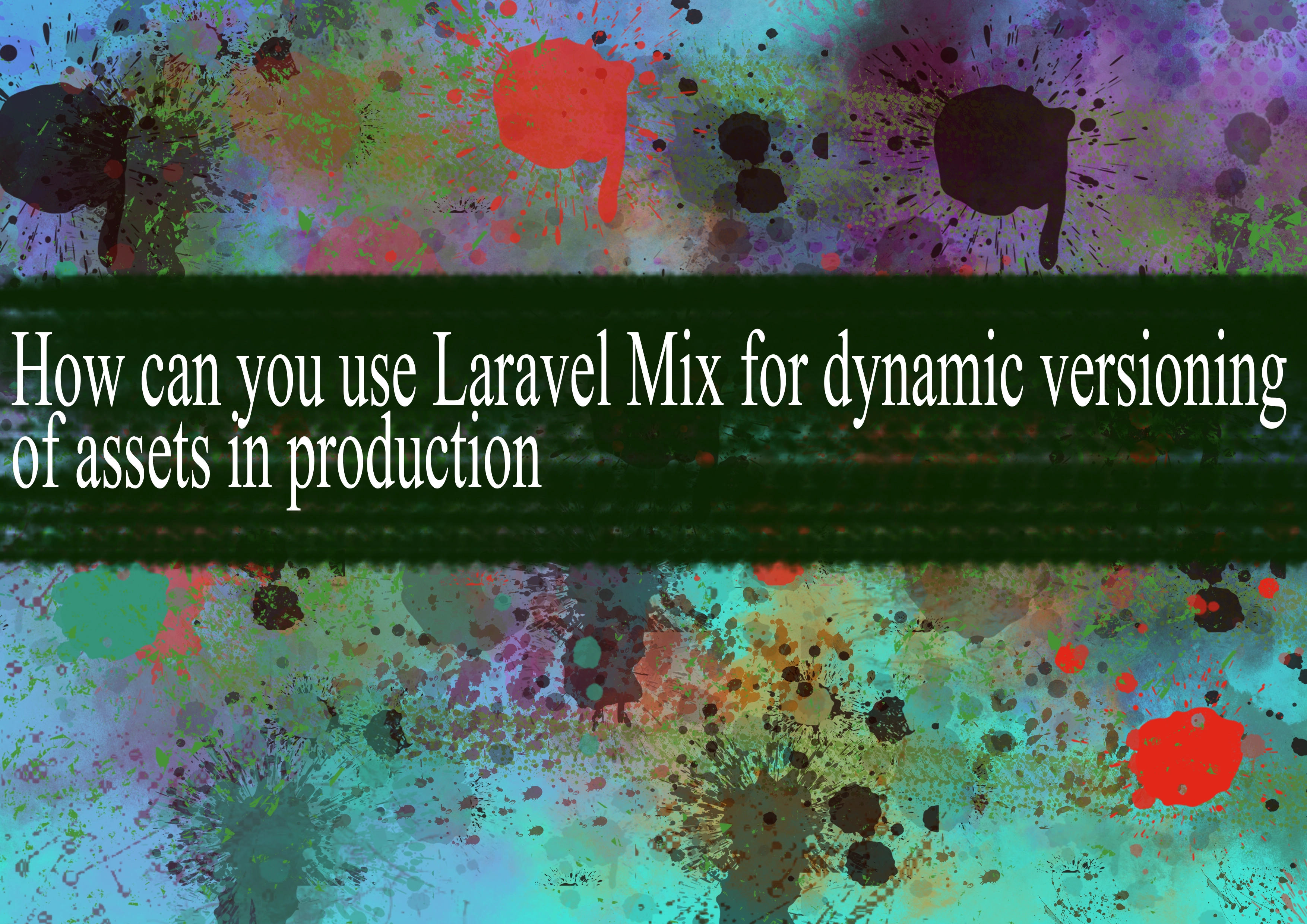How can you use Laravel Mix for dynamic versioning of assets in production

Laravel Mix is a tool that provides a clean API for defining basic webpack build steps for your Laravel application. It simplifies the process of compiling and bundling assets such as JavaScript, CSS, and images. One of the features of Laravel Mix is dynamic versioning of assets in production. This is useful for cache busting, ensuring that users always receive the latest version of your assets.
Here's how you can use Laravel Mix for dynamic versioning of assets in production:
Install Laravel Mix: Make sure you have Laravel Mix installed in your project. If not, you can install it using:
bashnpm installUpdate
webpack.mix.js: Open thewebpack.mix.jsfile in the root of your Laravel project. You can use themix.version()method to enable dynamic versioning:javascriptmix.js('resources/js/app.js', 'public/js') .sass('resources/sass/app.scss', 'public/css') .version();The
version()method adds a unique hash to the filenames of compiled assets. This hash is generated based on the file's contents, so when the contents change, the hash changes, forcing browsers to fetch the updated assets.Run Laravel Mix: Run the following command to compile your assets with versioning:
bashnpm run devOr for production:
bashnpm run productionThis will generate the compiled assets in the
publicdirectory with versioned filenames.Update Blade Templates: In your Blade templates, you can use the
mix()helper function to reference the versioned assets. For example:html<link rel="stylesheet" href="{{ mix('css/app.css') }}"> <script src="{{ mix('js/app.js') }}" defer></script>The
mix()function will automatically resolve to the correct versioned asset path.Additional Useful Links:
1. Laravel Mix Documentation: The official documentation provides comprehensive information about Laravel Mix and its features.
2. Laravel Mix GitHub Repository: Check the GitHub repository for the latest updates, issues, and community discussions.
3. Webpack Documentation: Laravel Mix is built on top of webpack, so understanding webpack can be beneficial for more advanced configurations.
By following these steps, you can easily enable dynamic versioning of assets in production using Laravel Mix. This helps in cache busting and ensures that users receive the latest version of your assets when changes are made.
=== Happy Coding :)
-
Popular Post
- How to optimize for Google's About This Result feature for local businesses
- How to implement multi-language support in an Express.js application
- How to handle and optimize for changes in mobile search behavior
- How to handle CORS in a Node.js application
- How to use Vue.js with a UI framework (e.g., Vuetify, Element UI)
- How to configure Laravel Telescope for monitoring and profiling API requests
- How to create a command-line tool using the Commander.js library in Node.js
- How to implement code splitting in a React.js application
- How to use the AWS SDK for Node.js to interact with various AWS services
- How to use the Node.js Stream API for efficient data processing
- How to implement a cookie parser middleware in Node.js
- How to implement WebSockets for real-time communication in React
-
Latest Post
- How to implement a dynamic form with dynamic field styling based on user input in Next.js
- How to create a custom hook for handling user interactions with the browser's device motion in Next.js
- How to create a custom hook for handling user interactions with the browser's battery status in Next.js
- How to implement a dynamic form with dynamic field visibility based on user input in Next.js
- How to implement a dynamic form with real-time collaboration features in Next.js
- How to create a custom hook for handling user interactions with the browser's media devices in Next.js
- How to use the useSWRInfinite hook for paginating data with a custom loading indicator in Next.js
- How to create a custom hook for handling user interactions with the browser's network status in Next.js
- How to create a custom hook for handling user interactions with the browser's location in Next.js
- How to implement a dynamic form with multi-language support in Next.js
- How to create a custom hook for handling user interactions with the browser's ambient light sensor in Next.js
- How to use the useHover hook for creating interactive image zoom effects in Next.js